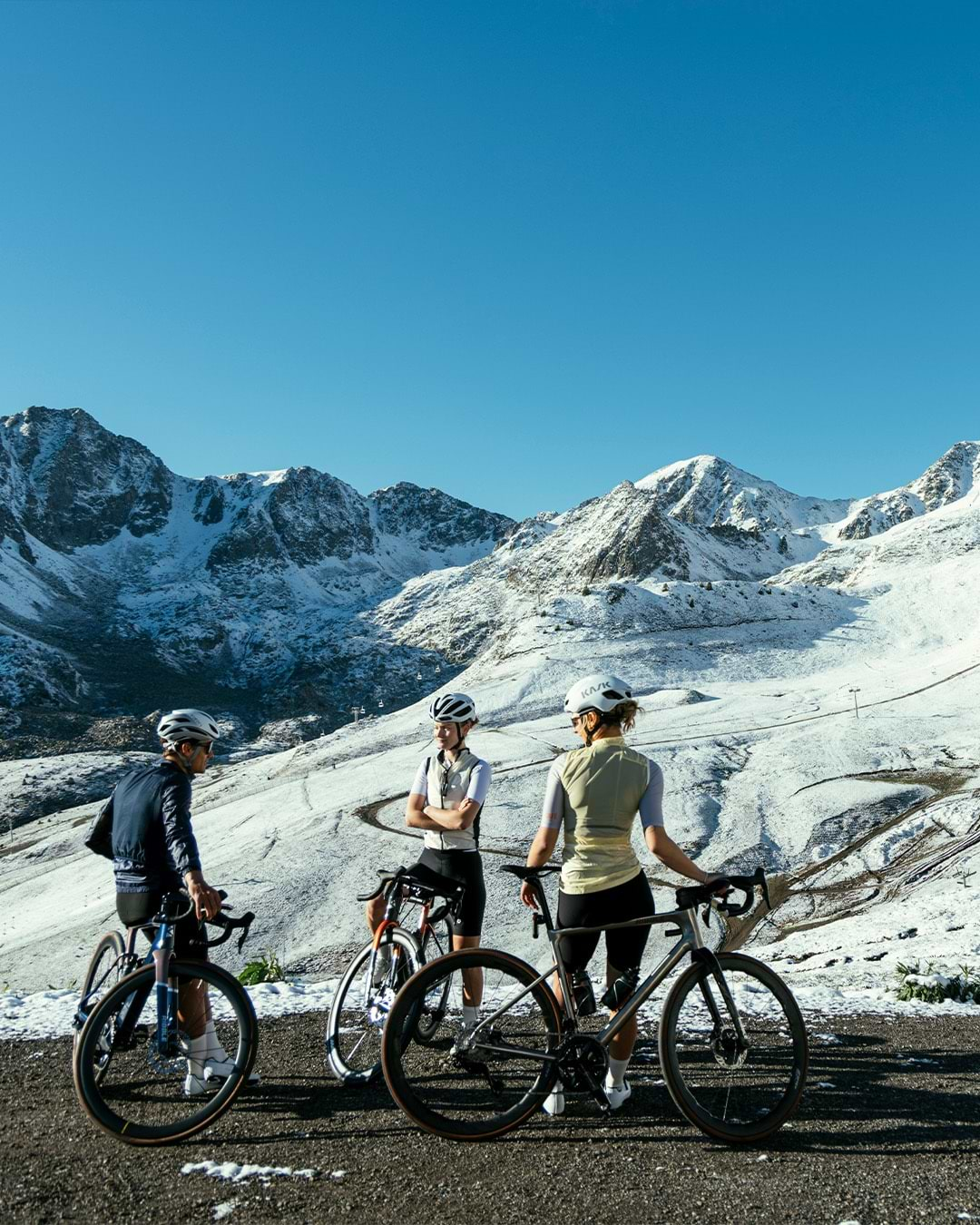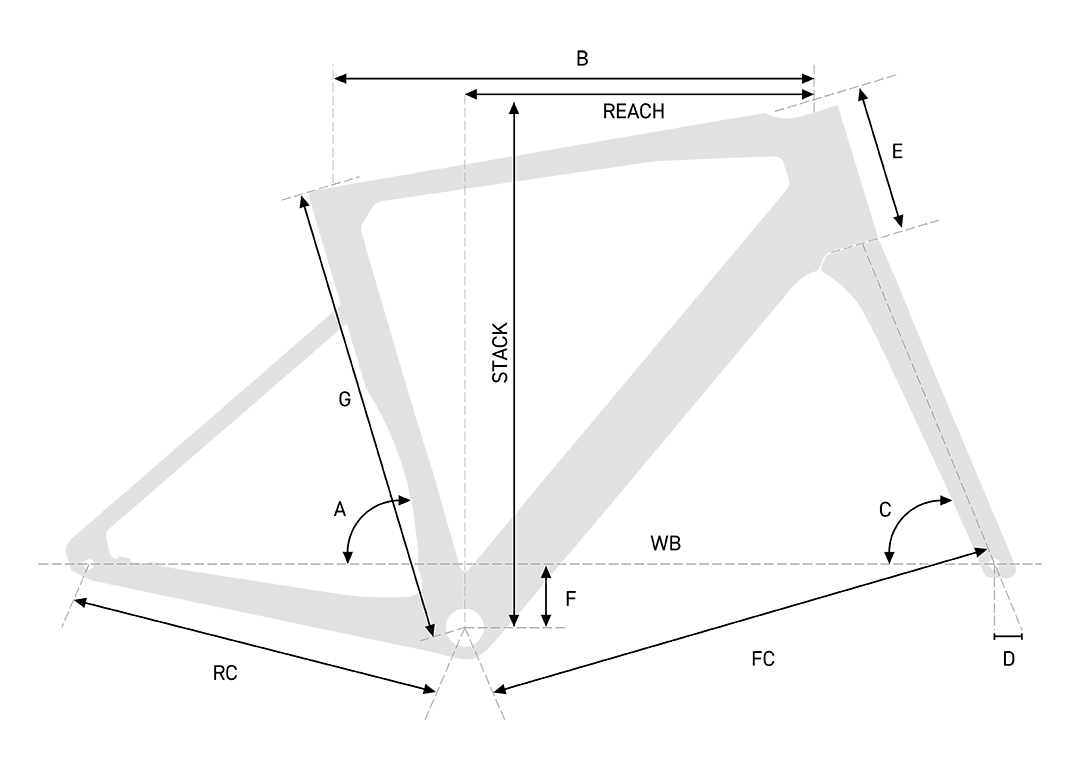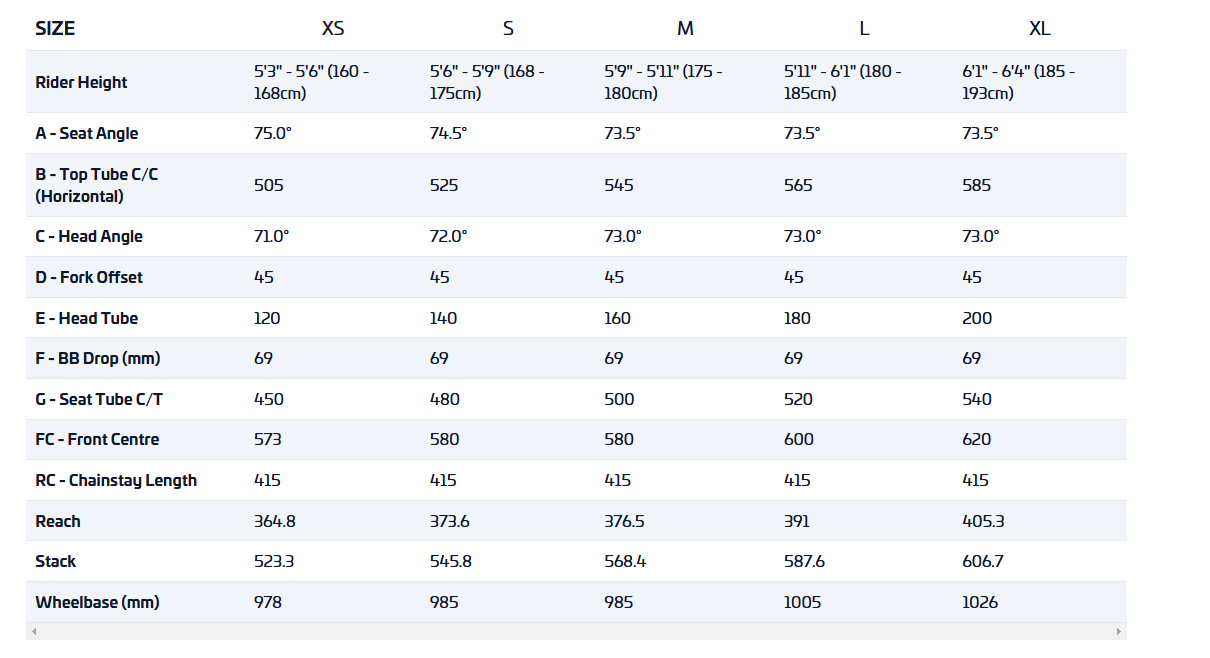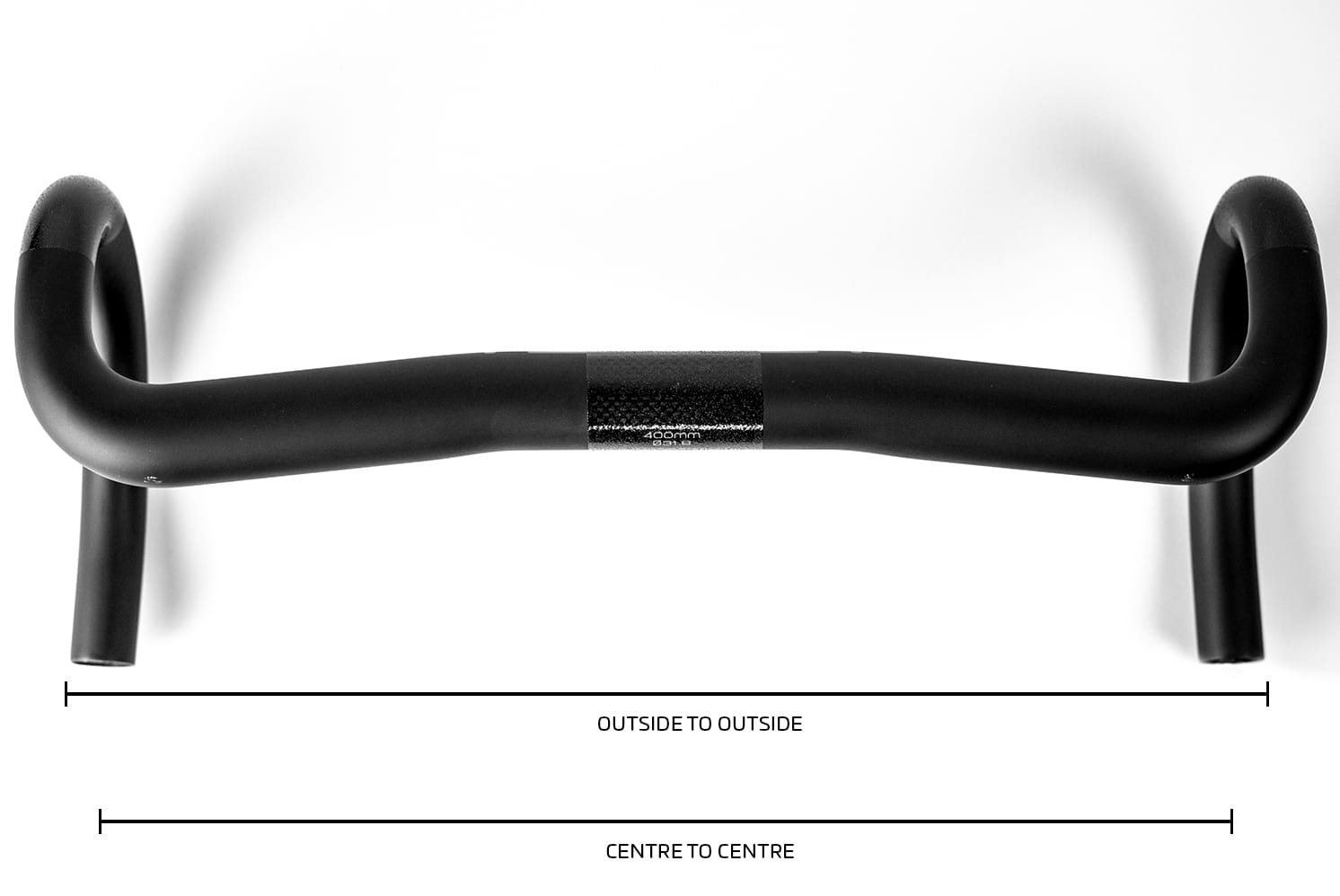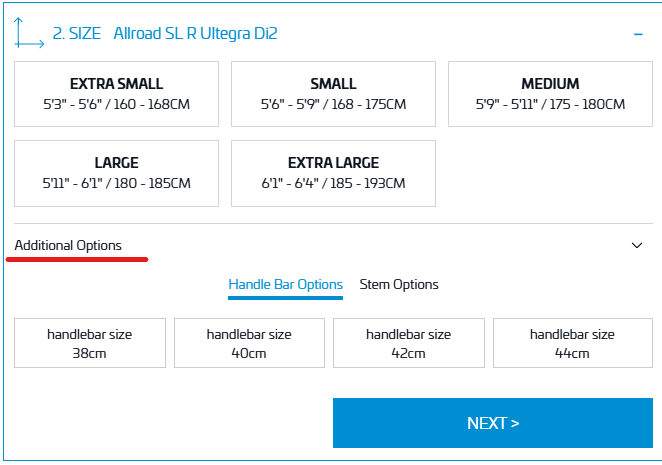Choosing the correct size road bike
Shopping for a new bike is an exciting time, right? But, when faced with such a wealth of bikes to choose from, how do you ensure that you get the size that's right for you? Choosing the correct size road bike couldn't be easier. As long as you are armed with the proper information, that is. Check out our guide to find out what works best for you.
Women-Specific Bikes
We like to think of all riders as being individuals, and our priority is in making sure that the bike is right for your body shape, size, and personal preference. Consequently, all of our bikes are unisex in design yet are customisable to achieve your ideal fit. The crucial element to getting this right is to ensure that the sizing of key components is correct. Most notable of these are the handlebars, handlebar stem and cranks. Specifying a ladies specific saddle is always highly recommended too, of course!
Back to Basics
Firstly, we should address what exactly is meant when we refer to 'geometry'. In short, geometry encompasses the shape, length, and angles of the tubes that come together to form the frameset. All clear so far?
For example, the left image above highlights each section of the frame and links it to a specific dimension in the geometry chart in the right image. For instance, an XS frame has a top tube (B) measurement of 50.5 cm whereas the S has one that is 52.5 cm.
The geometry of a bike affects the position you will find yourself sitting in, how the bike handles and its aerodynamic performance. A racing cyclist, for instance, will prefer a more stretched out position (long and low) for improved aerodynamics. A mountain biker, on the other hand, needs a more comfortable, upright riding position. One that offers a head-up riding position that enables them to pick their lines and improves the bikes stability and control.
1. Measuring your height and inside leg
The first step is to determine your height and inside leg measurement. Do you know these? If not, we have you covered. Here are some simple tips to help you obtain the measurements you need. The methods described below are easier with the aid of a helpful assistant. However, you can also obtain the measurements yourself in the absence of a willing
lackeyvolunteer.Height
- Stand upright in bare feet, with your back against a wall or doorframe.
- Place a pen or pencil atop your head and parallel to the floor.
- Make a small mark on the surface and measure.
Inside Leg
- In bare feet (we'll allow socks); stand upright with your back against a wall.
- Place a book/ruler between your legs and level with your crotch.
- Have someone measure the distance from the top of the book/ruler to the floor.
2. Frame Size
OK, now that you have your height and inside leg measurements, it's time to apply them to your bike of choice. The good news is that we have done the hard part for you. Each bike model found on our website includes a recommended height range for each individual frame size (see image). This height range isn't just based upon default factory measurements. We have actually collated the numerous real-world measurements of staff and customers taken in-store and via test rides and applied it to each bike.
If you find that you fall between 2 sizes, the general rule of thumb is to opt for the smaller size. Why you may ask? Well, it's because it's generally considered easier to make a bike that's a little small fit. You can make certain adjustments to make it fit, whilst the true cannot be said of a bike that's too large.
These adjustments include: increasing the stem length, crank length and raising the saddle. It is much more difficult to adjust a bike that is too large to fit the rider. After all, a seat post can only drop down so far. Whereas fitting too short a stem can result in overly responsive (twitchy) steering.
Alternatively, if you live or work in close proximity to one of our showrooms, we thoroughly recommend visiting popping in to see us. Our friendly and knowledgeable experts can assist you with everything from picking suitable components to sizing you up of one of our sizing jigs. The jig allows us to simulate the specific dimensions of your chosen bike and adjust the fit to get it just right for you.
However, if visiting a showroom is not possible, we can also deliver the showroom experience direct to you. Simply connect to one of our Live Instore Experts via a live one-way video call. Our experts can answer any queries you may have, offer sizing and componentry advice or even provide a product demo of each bike. All without leaving the comfort your own home, and remember it's completely anonymous. You can see us, but we cannot see you.
To connect with a Live Expert simply visit our website and click on the image in the bottom right corner of the screen (see below image).
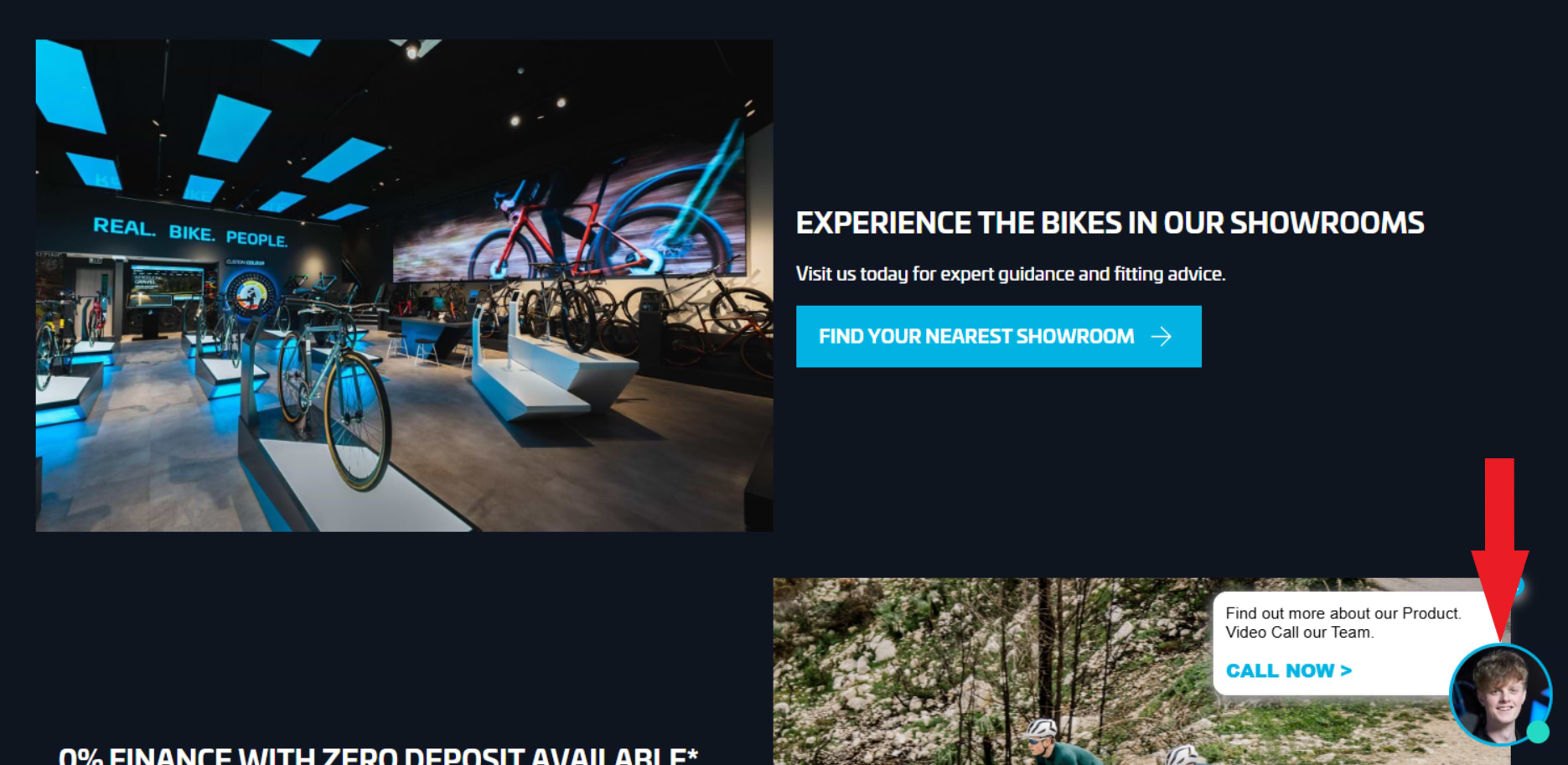
3. Key Components
As we alluded to earlier, there are several key components that are customisable and which ensure that the bike you receive is right for you. Whether you're male or female, the rules to obtaining the correct measurements apply to both equally. In direct contrast to an 'off-the-peg' bike where the components choices are preset, we offer a choice of customisation options.
Handlebar Width
Have someone measure the distance between the AC joints of your shoulders (the 2 knobbly bits to the front of your shoulder, where the collarbone and shoulder blade meet).
With the odd exception, most handlebar manufacturers will quote handlebar widths as a centre to centre measurement. This dimension is normally taken across the top or at the drops (where the bar plugs fit). However, flared handlebars may offer both measurements, to account for the flare. For instance, our flared handlbars are decribed as 42/51 cm, meaning they measure 42 cm across the tops and 51 cm at the drops
Very rarely you may encounter a brand quoting outside to outside measurements (Dedaciaii is one such manufacturer). However, if they are a centre to centre model, (like our own LEVEL brand) simply add 2cms to your shoulder measurement to obtain the correct width. If they are measured from outside to outside of the drops, add 4cms.
Handlebar Stem
Unlike handlebars, there is no magic formula to help you ascertain your correct stem length. The only way to accurately determine this is to book a professional bike fitting or visit one of our showrooms. Given the general trend of female riders being shorter in the torso and long in the leg, we find that a shorter stem length works better.
The average male rider will typically opt for a stem length of between 90 and 120 mm, whereas a stem length in the region of 70-90 mm is better suited to the female rider. Broadly speaking, the smaller the size of the frame, the shorter the stem should become. However, body shape plays a big part in determining what length you will need.
When you select a frame size on our website the handlebar and stem lengths will default to our recommended sizes for that particular frame. However, should you then change the size, these will decrease or increase correspondingly. You then have the option to amend these manually by clicking on 'additional options' in the bike configurator.
Saddle
As individuals, our anatomies are all very different. What may be comfortable for one person may cause discomfort for another. This makes it very difficult to pinpoint exactly what saddle will be comfortable for you. What is essential though is to ensure that it offers the right support for your sit bones (pelvic bones). Thankfully, there is a very simple method for measuring how far apart your pelvic bones are. All you need is,
- A flat bench or chair to sit on
- A flat object that sits lower than the seat, that you can rest your feet on. A stool, box, or bench for instance.
- Piece of corrugated cardboard.
- Tape measure.
- Chalk (optional)
- Take the cardboard and lay it on the seat.
- Lower yourself onto the cardboard so it is aligned under your buttocks.
- Raise your feet and place them on the lower footrest.
- Try to simulate the position you would normally adopt when riding a bike. If you like a relaxed position sit more upright. If you prefer a more aggressive race position lean forward.
- Hold this position for approximately 30 seconds.
- Stand up and retrieve the piece of cardboard.
- You should be able to make out 2 clear indentations imprinted upon the cardboard. These are produced by the sit bones and can be used to calculate your ideal saddle width. If you can't make out the indentations clearly, take a piece of chalk and rub it across the cardboard to bring out the indentations.
- Next, take the tape measure and measure the distance between the indents. Use the centre of each as your start/finish points.
You can now apply this information to choose an appropriate saddle for your preferred style of riding. All saddles have a defined width so just find the one that best suits you.
**Hybrid/MTB/Gravel **
Add 20 mm to the measurement, this will add more stability and comfort when assuming a more upright riding posture

Endurance/Road/Gravel Race
Add 10 mm to the measurement, this saddle offers a good compromise between comfort and performance.
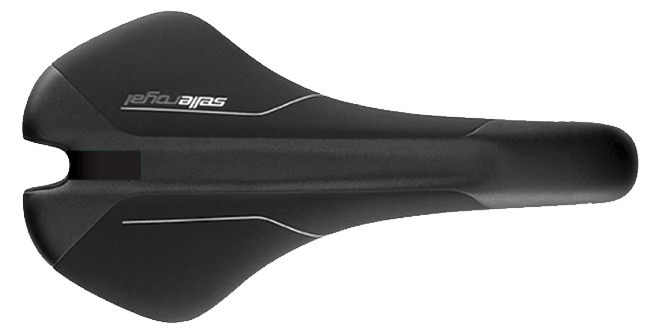
Further Assistance
We hope that this guide has been of assistance to you, and helps you to work out what sizes you need.
Visit Us
However, there's no better way to perfect the sizing and fit than to come in and see us. That's why we now have multiple showrooms located across England. Visit us for personal sizing guidance and to receive excellent buying advice from our team of friendly, professional and knowledgeable experts. Not to mention that you also get to see our range of bikes in the flesh of course.
Live In-Store Expert
By far one of the best ways to get in touch is to use the Ribble Live In-Store Expert function. This service brings the in-store experience directly to the comfort of your own home. Simply click on the icon that appears at the bottom right corner of the website to be connected to one of our Instore Experts. It's a one-way video call so you will be able to see us but we cannot see you. They can take you through everything from sizing to build options and even offer close-ups of the bikes and equipment on their hand-held cameras.
Customer Service
Our customer service team is available to take your call seven days a week and until late in the evenings on weekdays. Contact the team directly for friendly advice and assistance.
Social Channels
You can also contact us through the usual social channels, by direct message through Twitter, or by private message through Facebook, Whatapp or Instagram.
